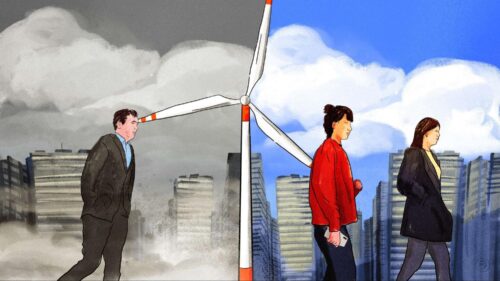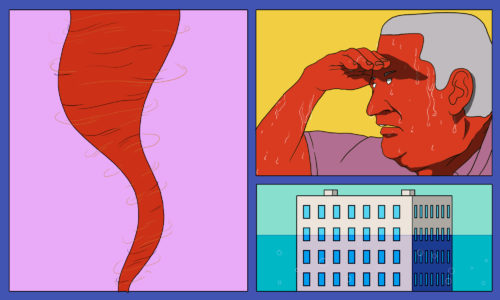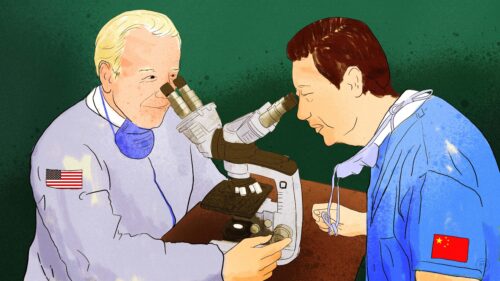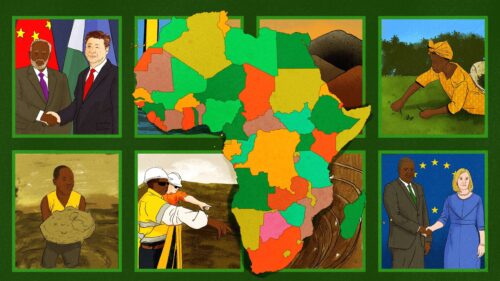Expert roundtable on climate change, COVID-19, and healthcare
“We’re at a point now where technology and policy are reinforcing each other, so we have a lot more reason to be optimistic about green finance and climate probably than any other time in the past fifteen or twenty years,” says Damien Ma, Director of the Paulson Institute’s think tank.
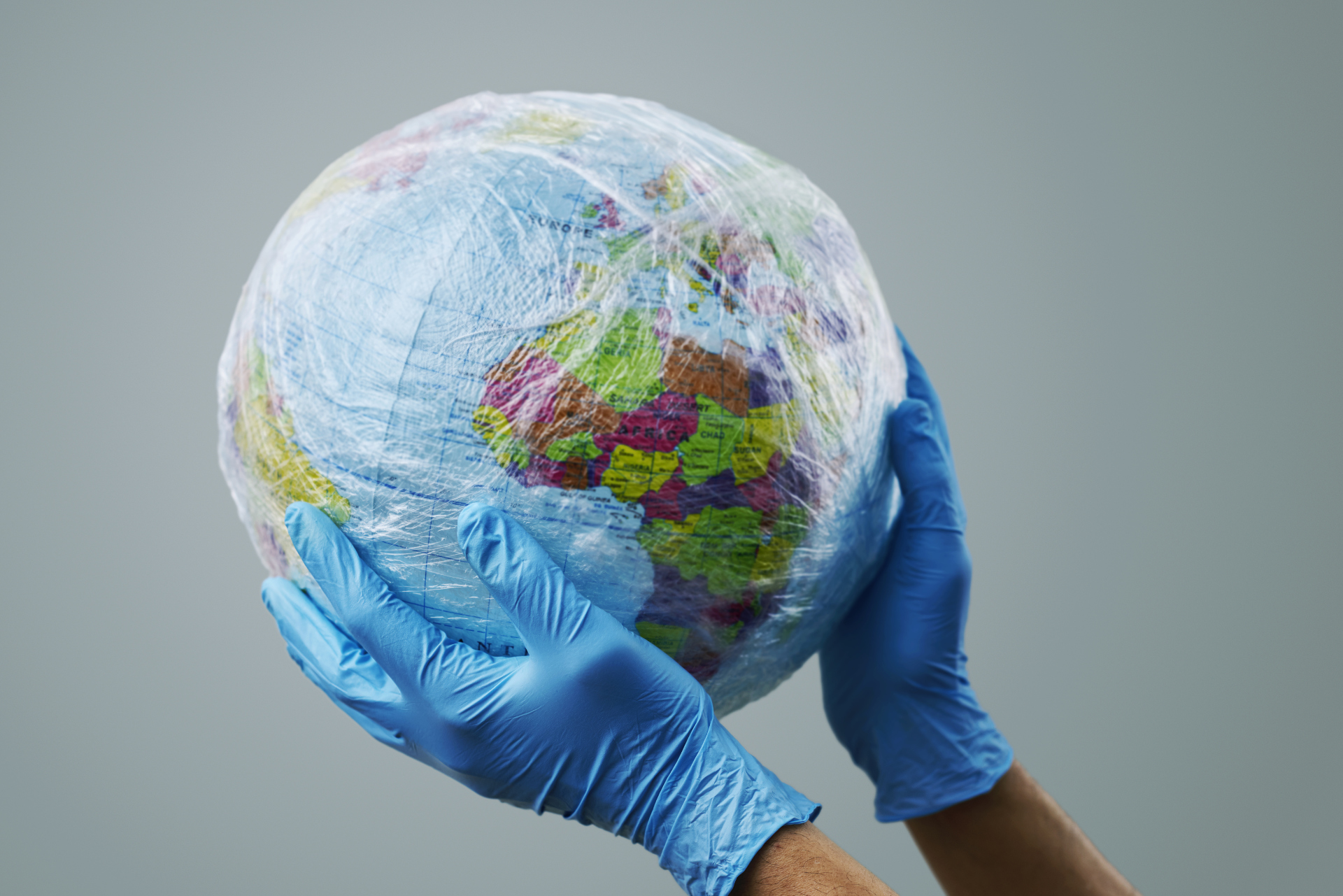
As part of Serica’s Virtual Annual Gala on February 4th, we sat down for a roundtable discussion on how the U.S. and China can work together on climate change, COVID-19, and healthcare — and the interlinkages between these three — with experts from The Nature Conservancy, Johnson & Johnson, The Paulson Institute, Council on Foreign Relations, and China’s first foreign-invested hospital chain.
Scroll down to read a summary of our roundtable discussion with Linda Krueger, Director of Biodiversity & Infrastructure Policy at The Nature Conservancy; Damien Ma, Director of The Paulson Institute think tank MacroPolo; Roberta Lipson, CEO of Chindex International and Chairman of the Board of United Family Hospitals; Yanzhong Huang, Senior Fellow for Global Health at the Council on Foreign Relations; and Sharon Chan, Head of JLABS @ Shanghai, Johnson & Johnson’s startup incubator.
The discussion was moderated by Jeremy Goldkorn, Editor-in-Chief of The China Project. You can watch the full roundtable discussion here. If you missed the Gala, you can watch the entire evening’s events, including speeches by the Serica 2021 Social Impact Leadership Award honorees here. The remarks of Serica Honorees Susan & David Rockefeller — honored for their philanthropic work on sustainability and in China more generally — may also be of particular interest. (Roundtable interviews have been edited for clarity and length)
Serica: Roberta, you’re running, amongst other things, a chain of hospitals in China during what must be one of the most stressful but also most interesting times to be doing that. What has that been like? Have your hospitals been involved in public health initiatives?
Roberta Lipson, United Family Hospitals: Our first focus was to make sure we had sufficient PPE for our frontline workers and we adjusted our workflow to ensure that our patients could stay safe. Although we had no positive cases, many public hospitals were closed because they were unprepared for infected cases and some were not admitting patients out of an abundance of caution. Many people in China were not able to get care from their traditional providers in the public system even for emergency issues, and we took care of many of these patients.
In terms of public initiatives, in addition to our own in-house testing and vaccination programs, we’ve sent our doctors and nurses to join government teams, public pandemic control efforts. Together with some of our investors, we also donated $1 million in PPE and medical equipment, including ventilators, to the Wuhan field hospitals.
Serica: What has worked well at the United Family hospitals or in the Chinese health care system in terms of ongoing COVID-19 preparedness?
RL: Life is more or less normal here in China. We’re now doing larger-scale vaccinations for the public according to priority groups, together with the government, and so soon we’ll feel even safer. But this is really a false sense of safety in the larger sense. The world won’t be back to normal until COVID is under control everywhere. That’s why we all really have to care about equitable vaccine distribution beyond our own borders. As a private healthcare institution, we play our part, but we can’t escape from the reality that we’re only part of a broader ecosystem. What we do to the food system and ecology will ultimately either poison us or nourish us. Globalization means that we’re all collectively responsible for taking lessons we’re learning from this pandemic and reach consensus on how to share learnings in order to prevent future problems.
Serica: Thanks Roberta, in some ways that’s a postcard of normality. Perhaps giving some insights into some of the dysfunction we’ve seen with dealing with COVID-19 in the U.S., I’d like to ask Yanzhong Huang. Yanzhong, you’re one of the world’s leading experts on global health governance, and are privy to a lot of high-level conversations with people working on major public health issues in the U.S., China, and around the world. How do you think the Biden team plans to participate in global health initiatives, and more particularly, how will the Biden team work with China on global health issues?
Yanzhong Huang, Council on Foreign Relations: It does seem clear that the Biden administration will adopt a different approach to global health governance. The U.S. is going to return to the World Health Organization and is expected to play a leadership role in strengthening and reforming the organization in addition to joining the COVAX pillar. Equally importantly, the Biden team recognizes the need to work with China on global health issues and pandemic response. In a recent article for Foreign Affairs, Jake Sullivan and Kurt Campbell summed up the Biden administration’s stance that competition does not exclude cooperation. The need for cooperation between the two countries is far more acute given the nature of contemporary transnational challenges, and leaders should consider cooperation not as concession by one party but an essential need for both. But this will look different than in the Obama years. The best approach, according to them, is to lead with competition, follow with offers of cooperation, and refuse to negotiate any linkage between Chinese assistance on global challenges and concessions on U.S. interests. So that means, Washington will not use cooperation on transnational issues such as disease prevention and control to the detriment of U.S. national interests, and Beijing has to learn to demonstrate flexibility and willingness to compromise and cooperate.
Serica: Does pandemic prevention have the paradoxical potential to actually bring the U.S. and China together in a meaningful way?
YH: Paradoxically, COVID has not brought the two countries together to fight a common external threat. Instead of working together to fight a common enemy, the U.S. and China quarreled over who should be taking responsibility over the outbreak and what political system is better suited to cope with the outbreak. Even the global race to develop a vaccine becomes a competition between two political systems. I found this to be rather unfortunate. With a new administration taking over, you would expect this to change and this has been reflected by an optimistic tone in Chinese state media over the future of the U.S.-China relationship. But you can’t blame the U.S. for all the wrongdoings and expect the Biden administration to be more accommodating of Beijing’s interest, especially when you consider that Democrats and Republicans are essentially on the same page with regard to U.S.-China policy. To follow the cliche, it takes two to tango, and China has to demonstrate that it has the willingness to adjust its own policy to note a favorable environment for cooperation.
Serica: Not the most optimistic of answers, but perhaps the people in this room can do something about that. Linda, it has become part of the conventional wisdom in the last year that environmental degradation and climate change are major factors behind emerging diseases, including the COVID-19 pandemic. The connection was illustrated, perhaps simplistically, in the film Contagion where a bat displaced from its natural habitat by a real estate development infects a pig on a farm that infects a diner at a restaurant, who becomes patient zero for a COVID-19-type pandemic. Away from Hollywood, from your work at The Nature Conservancy, how do you see the links between climate change and pandemics?
Linda Krueger, The Nature Conservancy: We see this not as one crisis but three interrelated crises. We have a human health crisis, a biodiversity crisis, and a climate crisis. The root causes of all these crises share a lot of commonalities. Quite frankly, we’re destroying ecosystems and destroying nature at an alarming and unprecedented rate, and this causes all sorts of knock-on effects, including reducing our resilience to pandemics, making pandemics more likely, and throwing our ecosystem off-balance. A lot of what climate change does, in addition to the direct effects of warming, [is it] causes habitat loss and this stresses wildlife populations, making them more susceptible to disease, and [this] can also increase human-wildlife contact through floods and droughts and other changing patterns that change our movements and activities.
Serica: Are such links becoming part of the conversation in the scientific and government circles that your work brings you into? Is this going to result in new policies?
LK: The centrality of the connection between human health, nature, and climate is absolutely understood in the scientific world but needs to be better reflected in our policies and in the urgency that we’re responding to all three. There are two major international environmental negotiations underway this year: one is the follow-on to the Paris Agreement, but there’s also a biodiversity convention hosted this year by China. Both of these agreements are absolutely crucial to get global action on what is fundamentally a global collective action problem. However, as environmental agreements, we know these can only do so much. What we really need to be doing moving forward is looking at all our activities across sectors and across the business community and putting them through a climate-neutral and biodiversity-positive lens.
Serica: Thank you, Linda. We can conclude again that we have work to do. Damien, you lead the think tank at the Paulson Institute; Paulson also has its Green Finance Center. What is happening when it comes to U.S.-China green finance? Is this something that the Biden administration is likely to get behind, and are there American or Chinese private-sector actors that are engaging seriously with green finance?
Damien Ma, Paulson Institute: Yes, there’s quite a bit of action going on under green finance. You can probably divide it into the biodiversity side, which Linda talked about, and the climate side. But the fundamental idea of green finance is to involve market participants to make climate and biodiversity more of an economic issue rather than just purely a conservation or nature-based issue. Obviously, climate has been slow-going for a long time because it’s in the future and we humans are very bad at thinking about risk in the future. But to me, it’s probably one of the biggest existential risks. We’ve also always had a monumental collective action problem when it comes to climate. But I think there is reason to be optimistic about the climate going forward. One reason is that the economics are finally there. It used to be that solar and wind were very expensive, but now if you look at China’s effect on solar prices over the last decade, a lot of solar is cheaper than coal. When economics has arrived, it makes the political decision easier. With wildfires in California, it’s no surprise that California has been one of the leaders in America on climate and dealing with China.
Serica: How far are we beyond the buzzword when it comes to green finance? Are we seeing state and financial sector entities significantly changing their behavior because of environmental concerns?
DM: I’ll leave you with two numbers: 30 and 30. According to investment firm TPG, there’s about $30 trillion dollars worth of net-zero pledges already of investment. The other 30 are the years from 2020 to 2050, when many of these pledges are set to go into effect. At a minimum, we’re talking about at least $30 trillion of investment over 30 years. This represents a fundamental restructuring of our underlying economy. This is what the energy transition is about. The investment opportunities are huge and the private sector needs to be involved in a very direct way through returns. We’re at a point now where technology and policy are reinforcing each other, so we have a lot more reason to be optimistic about green finance and climate probably than any other time in the past fifteen or twenty years.
Serica: Thanks for ending on an optimistic note, that’s hard to come by in these times. I’d like to turn back to the private sector and China and to Sharon Chan. Sharon, congratulations on Johnson & Johnson being the first to come out with an effective, single-dose COVID vaccine. How will this change the global vaccine response and what other opportunities do you see emerging in healthcare to control the pandemic?
Sharon Chan, Johnson & Johnson: While the availability of multiple vaccines presents an opportunity to protect a significant portion of the world’s population, the world’s reaction to COVID-19 has also brought a number of opportunities that can change the face of healthcare as we know it today. The pandemic has also shown substantial need for stronger disease preparedness. So instead of waiting for someone to get sick to then manage the condition, the world will increasingly move toward eliminating diseases through preventing, intersecting, and curing them. With this, we expect to see several changes. Firstly, more convenient consultations and monitoring of disease. Secondly, new access models that will play a role in managing costs, driving quality and improving patient access, and highlighting inequality and the social determinants of health. Lastly, an acceleration in the use of data and analytics, which will not only help us achieve better health outcomes but also move from disease care to true healthcare. It’s the acceleration of these trends that we believe hold the potential to significantly change the trajectory of health.
*
Want to learn more? The Serica Initiative’s China Philanthropy & Nonprofit Newsletter is a monthly deep-dive into the trends, major players, and regulatory environment for philanthropic and nonprofit activity between the U.S. and China. Subscribe to the newsletter here.


